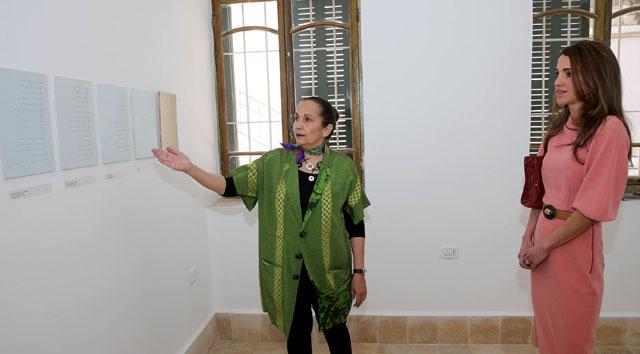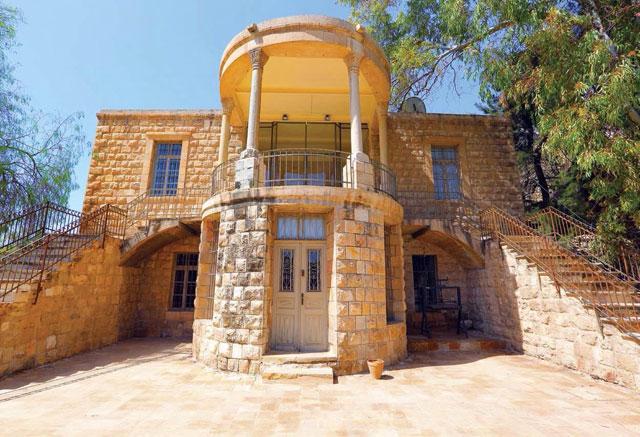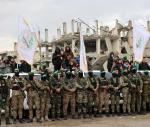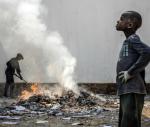You are here
“Under Fire”: Screams, Memories, Hopes on paper from Gazan artists
By Sophie Constantin - Oct 20,2024 - Last updated at Oct 20,2024

The works on display are a powerful reminder of the role art plays in times of war – not as a luxury, but as a necessity (Photos by Ahmed Khlifat)
AMMAN — At Darat Funun, a powerful display titled “Under Fire” presents the work of four Gaza-based artists: Basil Maqousi, Majed Shala, Raed Issa, and Sohail Salem. Despite heavy bombardments, these artists never stopped drawing. Their works, salvaged from the wreckage of war, testify to the ongoing genocidal war they are enduring.
The display, which began on October 15, embodies Gaza’s resilience, showcasing artworks that arrived in Jordan through Egypt, passing through the Rafah border just before its closure. Darat Funun now acts as a vessel, hosting these pieces of history, anguish, and survival in a space where the artists’ presence, though distant, is deeply felt. Using limited resources, such as tea, hibiscus, charcoal, ink, spices, and scraps of paper, the artists transform everyday materials into testimonies of survival.
Art under siege
“These are not paintings made for galleries,” says Basil Maqousi, in his showcased notes. “They are shards of our bodies, scattered like shrapnel with each moment of bombardment.” Maqousi’s series, “Faces from My Homeland”, employs hibiscus ink and pomegranate juice on medicine packaging – art supplies he had to improvise after fleeing his home under heavy fire. “I made these pieces on stomach medicine packages, which people here need as they suffer from hunger and anxiety. This is the reality of Gaza.”
The emotional depth of Maqousi’s words resonates throughout the showcase. “These paintings are our screams, their compositions formed with our blood. They are the smiles of our children, now gone. If I am not standing among you,” he writes, “then I am a martyr in my final art residency.” His words carry the weight of the uncertain future faced by artists in Gaza.
Drawing in the dark
Majed Shala, another artist in the showcase, reflects on the emotional paralysis that struck him when the war began. “At first, I could not create at all, feeling paralysed by fear,” he confesses. “But as the suffering deepened, I forced myself to retrain my hand to draw.” Shala’s works document scenes of displacement that mirror the memories of the 1948 Nakba, having lost both his home and two art studios to bombings. Shala now works with scraps of paper and watercolour, unable to bear the thought of creating on large canvases, only to see them destroyed again. “I cannot face the possibility of losing more. I have already lost so much, my two studios and a lifetime of work.”
“There is no room left for love, culture, or education,” Shala writes. “Even hope and art are held captive. We wait, endlessly, for something, anything.” His sketches, carried to Darat Funun in the form of notebooks and loose pages, are deeply personal chronicles of exile. Their rawness evokes both the past and present, serving as a bridge between memory and the harsh realities of today.
Journal of survival
For Sohail Salem, sketching became a way to document both external events and his own emotional landscape. Using UNRWA school notebooks, Salem captures the scenes of war: men being taken to detention centres, children wandering aimlessly, and families crammed into tents. But his journals also reflect fleeting moments of hope. “These sketches are pieces of my heart and soul,” Salem writes, relieved that his journals made it safely to Amman.
Salem explains that he uses only minimal colour, favouring lines that allow him greater freedom. “Colour distracts me, while the line gives me space to work,” he shared. The lined pages of the notebooks add sculptural depth to the drawings, their folds and ink stains chronicling not only the war but the artist’s journey through it.
Art in Exile
Raed Issa’s artworks, also displayed in the showcase, reveal the trauma of displacement. “We are not alright,” he writes. “Our children ask questions we cannot answer. Bombs erase entire neighbourhoods, memories vanish, and brides mourn weddings that never happened.” His art, created under relentless bombardment, is not just an expression but a form of survival – a way to bear witness to loss, fear, and the longing for relief. “Even hope and art are now held captive. The burden is immense, the pain unbearable, the catastrophe overwhelming. All we have left if patience and prayer, for we truly have no other choice,” he wrote in October 2023.
Issa’s sketches, now showcased in Amman, remind viewers that the war in Gaza is not a distant conflict but a lived experience. His words and artworks resonate with a universal longing for safety, peace, and connection – emotions that transcend borders and cultures.
Darat Funun serves as a conduit for these artists’ voices. The technical challenges of coordinating the exhibition, due to unstable electricity and limited internet access in Gaza, underscore the immense obstacles the artists faced to share their work. “Under Fire” is a testimony to the genocide unfolding in Gaza, as these artworks bear witness to the suffering, endurance, and humanity of people under siege.
The works on display are a powerful reminder of the role art plays in times of war – not as a luxury, but as a necessity. They are not merely objects to be admired but stories to be felt, understood, and remembered.
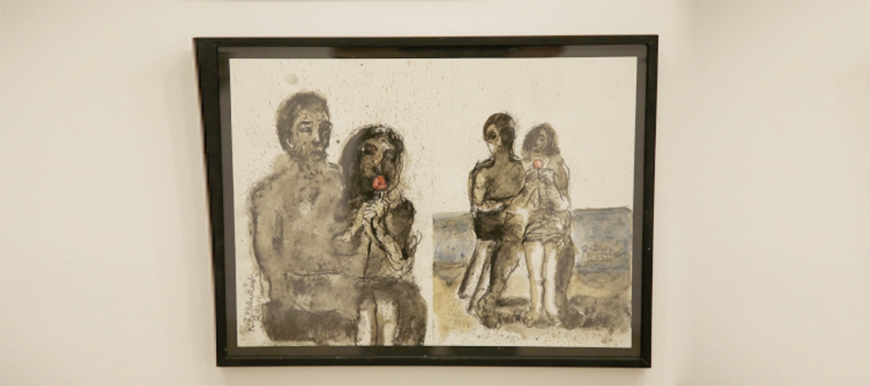
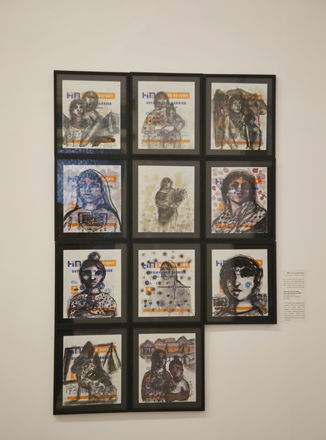
Related Articles
AMMAN — Darat Funun – The Khalid Shoman Foundation, a sanctuary for artists across Jordan and the Arab world, has recently unveiled a poigna
Her Majesty Queen Rania on Monday visited Darat Al Funun, marking the 25th anniversary of its establishment as a home for the arts and artists of Jordan and the Arab world.
AMMAN — As soon as Jehad Ameri graduated from school 22 years ago, he began looking for a centre to further enhance his artistic skills.&nbs



